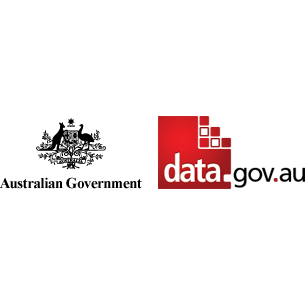Brief description
## **Abstract**\\*THIS DATASET IS A PRE-RELEASE VERSION. PLEASE USE GEOFABRIC HYDROLOGY REPORTING REGIONS DATASET\\*
This dataset and its metadata statement were supplied to the Bioregional Assessment Programme by a third party and are presented here as originally supplied.
Geofabric Hydrology Reporting Regions is derived from aggregations of contracted catchments from Geofabric Hydrology Reporting Catchments. This product contains two candidate reporting regions, namely AWRA Drainage Division for national scale reporting purposes and River Region for regional scale reporting purposes. More reporting regions may be added in future releases based on user requirements.
This product contains four feature types including: AWRA Drainage Division, AWRA Drainage Division Contracted Catchment Lookup, River Region, and River Regions Contracted Catchment Lookup.
Full metadata available at: https://data.gov.au/data/dataset/6f39e080-ded7-4563-a8f6-ab64da57e590/resource/6aa681fb-097d-4da7-ac85-a13a258cc353/download/hrregionsgdbv211.html
## **Purpose**
The purpose of Geofabric Hydrology Reporting Regions is to provide a stable set of reporting boundaries for products such as the Bureau's Australian Water Resources Assessment (AWRA). It contains two levels of hydrological reporting regions. The first delineates national level Drainage Divisions and the second delineates regional level River Regions across Australia.
The AWRA Drainage Division is defined for the purpose of providing a stable set of reporting regions specifically for the purpose of the Bureau's Australian Water Resources Assessment 2010 and are referred to as the 2010 Assessment Reporting Regions.
The River Regions were based on a specification developed by Bureau hydrologists involved in water resources assessment in consultation with the Geofabric team and scientists from CSIRO and ANU. These boundaries were developed for use in regional scale reporting and hydrological modelling. The River Region boundaries were not used in the Australian Water Resources
## **Dataset History**
Geofabric Hydrology Reporting Regions is part of a suite of Geofabric products produced by the Australian Bureau of Meteorology. The geometry of this product is derived from aggregations of Contracted catchments within the Hydrology Reporting Catchments product.
This product contains two candidate reporting regions, namely AWRA Drainage Divisions for national scale reporting purposes and River Regions for regional scale reporting purposes. More reporting regions will be added in future releases based on user requirements.
The AWRA Drainage Divisions were defined for the purpose of providing a stable set of reporting regions specifically for the purpose of the Bureau's Australian Water Resources Assessment (AWRA) 2010 and are referred to as the 2010 Assessment Reporting Regions.
The AWRA Drainage Divisions were based on the NCB Level 1 Drainage Division feature within the Geofabric Surface Catchments product with the addition of an extra division dividing NSW and Victoria. This division was based on a boundary derived from the NCB Level 2 Drainage Basin feature and was chosen to best approximate the border between New South Wales (NSW) and Victoria, creating the South East Coast (Victoria) and South East Coast (NSW) regions.
The River Regions were based on a specification developed by Bureau hydrologists involved in water resource assessment in consultation with the Geofabric team and scientists from CSIRO and ANU. These boundaries were developed for use in regional scale reporting and hydrological modelling.
The River Regions were based on the NCB Level 2 Drainage Basins, within the Geofabric Surface Catchments product, for every location in Australia except for the Murray Darling Basin (MDB) where a finer level of division was required.
The boundaries within the MDB were originally developed on the selections of Pfafstetter levels 3 to 7 that best approximated the Australian Water Resource Council (AWRC) river basins. A set of decision rules was developed using evidence from the GEODATA 9 Digital Elevation Model (DEM-9S) Version 3.1 flow direction grid, the 1 second DEM-H Shuttle Radar Topography Mission (STRM) data, Bing Maps Satellite Images, Geofabric stream flow directions and Geofabric Surface Cartography data. Particular attention was given to areas with internal draining basins, minimal or no streams, and floodplain areas with anabranch and braided streams.
These informed the creation of MDB Contracted nodes which correspond to features in the landscape with hydrological significance, with subsequent creation of Contracted catchments. Contracted catchments were then aggregated to create River Regions within the MDB.
Processing steps:
1. re-composited feature classes in the Geofabric Maintenance Geodatabase Feature Dataset are assigned unique Hydro-IDs using ESRI ArcHydro for Surface Water (ArcHydro: 1.4.0.180 and ApFramework: 3.1.0.84)
2. feature classes from the Geofabric Maintenance Geodatabase Feature Dataset are extracted and reassigned to the Geofabric Hydrology Reporting Regions Feature Dataset within the Geofabric Hydrology Reporting Regions Geodatabase.
A complete set of data mappings, from input source data to Geofabric Products, is included in the Geofabric Product Guide, Appendices.
Changes at v2.1
! Updates to the River Region names to conform with the Drainage Division
and River Region graphic.
Changes at v2.1.1
! Change to the boundary of the Daly and Roper River Regions (affects both
AWRADrainageDivision and RiverRegion) moving the area draining to Western
Creek from the Daly River Region to the Roper River Region.
! Other minor small fixes addressing boundary consistency issues in coastal
areas between RiverRegions-AWRADrainageDivisions-AHGFContractedCatchments.
- Correction of name for RiverRegion, 'Moorabool River' renamed to
'Little River'
## **Dataset Citation**
Bureau of Meteorology (2013) Australian Water Resource Assessment (AWRA) River Regions. Bioregional Assessment Source Dataset. Viewed 13 March 2019, http://data.bioregionalassessments.gov.au/dataset/d263c464-c700-4aa6-9e55-39b6b82115a0.
Spatial Coverage And Location
text: POLYGON ((153.6375 -43.6425, 153.6375 -9.23, 112.9225 -9.23, 112.9225 -43.6425, 153.6375 -43.6425))
Subjects
Australia |
Central West subregion |
Cooper subregion |
Galilee subregion |
Gloucester subregion |
Gwydir subregion |
Hunter subregion |
Maranoa-Balonne-Condamine subregion |
Namoi subregion |
Sydney Basin bioregion |
inlandWaters |
User Contributed Tags
Login to tag this record with meaningful keywords to make it easier to discover
Identifiers
- Local : d263c464-c700-4aa6-9e55-39b6b82115a0
- URI : data.gov.au/data/dataset/b4ff32ac-77a6-46b9-b26b-fa7cb84f648a



